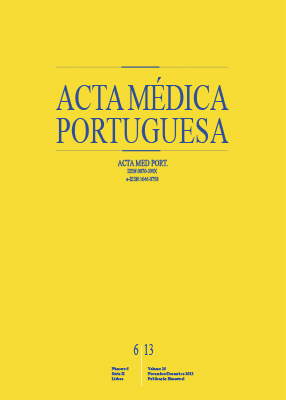CD4+, CD8+ AND CD19+ Cells at Individuals with Dyslipidemia
DOI:
https://doi.org/10.20344/amp.1989Abstract
Introduction: The past decade has witnessed an increasing recognition that inflammatory mechanisms play a central role in the pathogenesis of atherosclerosis and its complications. Recently, attention was focused on the potential role of plasma markers of inflammation as risk predictors among those at risk for cardiovascular events. Of these potential markers, C-reactive protein (CRP), IL6, metalloproteinases, ICAM, VCAM and other molecules, have been extensively studied. On the other hand, to our knowledge, there are only a few studies on the role of inflammatory cells, like T and B lymphocytes in the atherosclerosis.Material and Methods: By Flow Cytrometry analysis we have determined on dyslipidemic people and on a control group, the percentage of some peripheral inflammatory cells, like CD3+, CD4+, CD8+, CD19+, CD56+, CD56CD8+, DN, CD25+, CD26+, CD25CD3+, CD26CD3+, CD25CD26CD3+, CCR5+, CCR5CD3+, CCR5CD4+, HLADR+, HLADRCD4+, HLADRCD8h+, HLADRCD8low+, HLADRCD8+, CD95+, CD95CD95L+, CD3CD95+, CD3CD95L+, CD62L+, CD3CD62L+, CD69+, CD69CD3+ e CD69CD4+.
Results: In the present study we have particularly studied the percentage of CD4+, CD8+ and CD19+ cells. The CD4+ cells have been significantly reduced in the people with dyslipidemia.
Discussion: We do not know the peripheral numbers of the subtype Th1 and Th2, neither the percentage of CD4+CD25+ cells (regulatory T cells). We have not find any differences on the percentage from the CD8+ and CD19+ cells.
Conclusions: In spite of the identified limitations resulting from the small-sized samples, it was possible to show a reduction of some molecules after application of acetylsalicylic acid.
Downloads
Downloads
Published
How to Cite
Issue
Section
License
All the articles published in the AMP are open access and comply with the requirements of funding agencies or academic institutions. The AMP is governed by the terms of the Creative Commons ‘Attribution – Non-Commercial Use - (CC-BY-NC)’ license, regarding the use by third parties.
It is the author’s responsibility to obtain approval for the reproduction of figures, tables, etc. from other publications.
Upon acceptance of an article for publication, the authors will be asked to complete the ICMJE “Copyright Liability and Copyright Sharing Statement “(http://www.actamedicaportuguesa.com/info/AMP-NormasPublicacao.pdf) and the “Declaration of Potential Conflicts of Interest” (http:// www.icmje.org/conflicts-of-interest). An e-mail will be sent to the corresponding author to acknowledge receipt of the manuscript.
After publication, the authors are authorised to make their articles available in repositories of their institutions of origin, as long as they always mention where they were published and according to the Creative Commons license.









